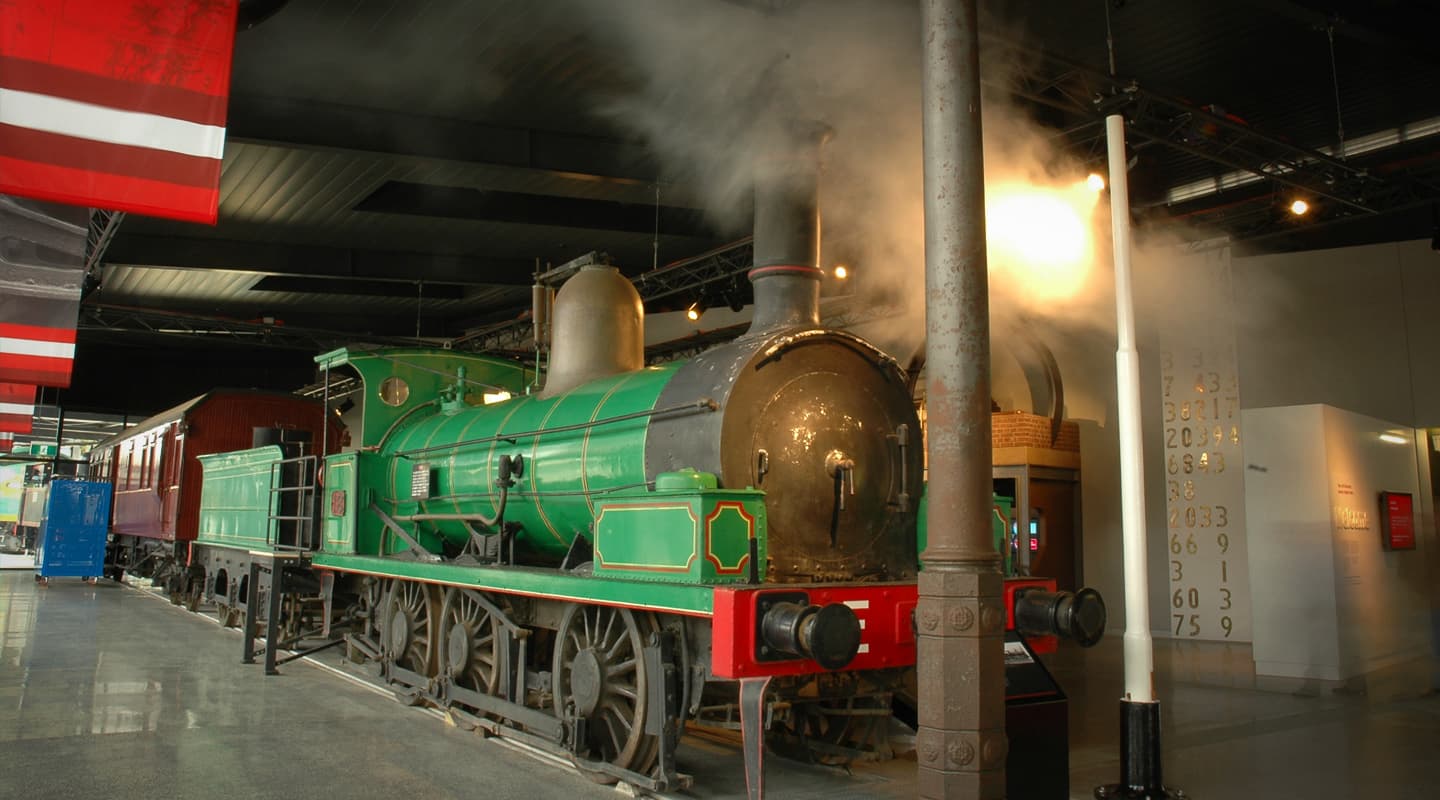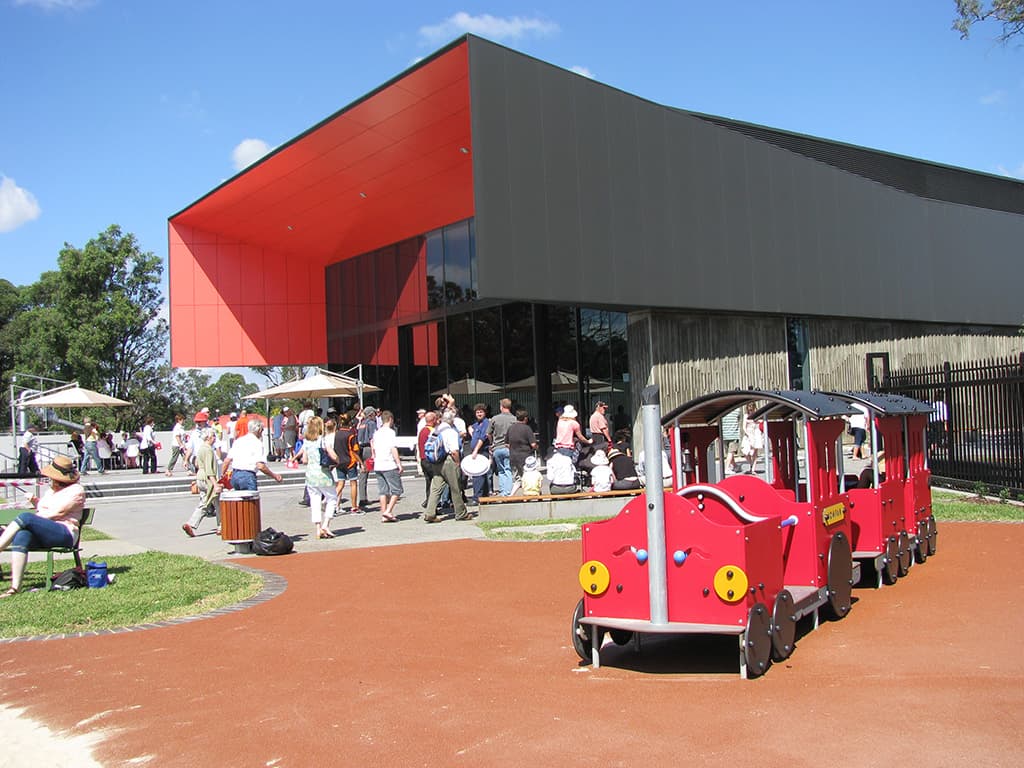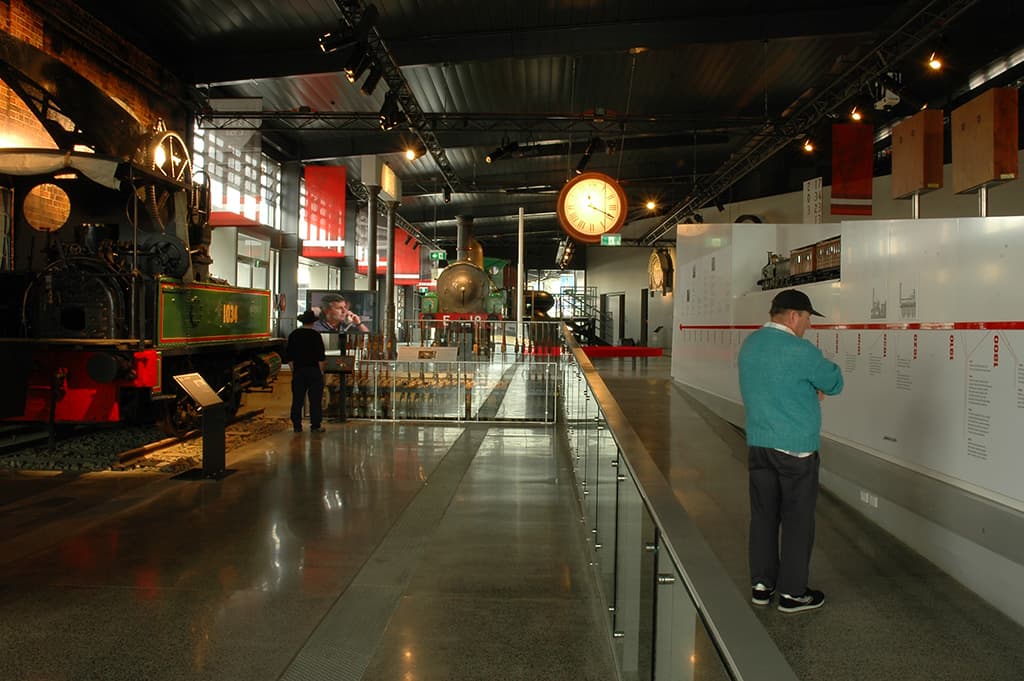
All Aboard: Trainworks
Trainworks rail museum breathes new life into train-spotting.
Text:/ Tim Stackpool
Photographer:/ Brian Shirley
Playing trains may have been a childhood pastime for the generations before the advent of Transformers, Nintendo DS, Space Lego, Atari and the Playstation, but Australians still seem to have a deep and abiding fascination with trains, especially steam trains.
The heritage of rail transport in Australia is well documented, and while various historical groups and clubs do what they can to ensure its contribution to nation building remains remembered, Railcorp’s Trainworks at Thirlmere in Sydney’s south-western outskirts, is a bold and striking display, home to over 100 pieces of the rolling stock associated with the history of the railways in New South Wales.
Back in 2007, RailCorp’s Office of Rail Heritage commissioned the development of a concept design for the Trainworks location, previously managed by the volunteer-based NSW Rail Heritage Museum. The upgrade project was required to improve the on-site structures and amenities for the conservation, presentation and maintenance of the collection with the aim of positioning the facility as a regional tourism destination.
With a swag of similar projects under their belt, such as the Sydney Harbour BridgeClimb heritage display and the International Antarctic Centre in New Zealand, HPA Projects was commissioned to undertake various aspects of Trainworks, and along with sub-contractors who included respected multimedia developers The Shirley Spectra, Trainworks has now become the destination for anyone wanting to revisit locomotives that have reached ‘the end of the line’.
“Every project we work on is unique,“ says HPA Projects’ Michael Pender. “One unique character of this project is the scale of the heritage objects presented. Locomotives are very large, and some older examples are very fragile. Trainworks also seeks to appeal to a younger market, and making heritage rolling stock relevant to younger people was certainly a challenge with this project.”
The heart of the new development is a vast hall featuring just a few of the precious jewels of rolling stock in the museum’s collection. The Shirley Spectra was tasked with creating a series of multimedia programs to assist with the interpretation of some of these items and also with immersing the entire hall in the general audio ambience of a busy NSW Government railway station in the early years of the twentieth century.
STATIONARY SOUNDS
The primary station ambience is provided by 10 Bose Panaray cabinets distributed around the hall’s ceiling trusses, while some 22 JBL Control One cabinets are placed in specific locations to provide point sources for effects such as engines hissing and guards calling and blowing their whistles. Audio replay comes off a pair of networked Alcorn McBride 8-TraXX (8 x stereo pairs) Compact Flash-based players.
To keep the soundscape at comfortable listening levels while accommodating the wide range of visitor numbers throughout the day, Brian Shirley designed an intelligent level control system. Driven by 15 strategically-placed Passive Infra Red (PIR) presence detectors, the system monitors the number and frequency of PIR activations, then ramps the volume gently up and down using 10 second fades on AMX NXC-VOL4 cards.
Using the same presence information, the system also decides whether the audience is sufficiently large to warrant adding in a relatively expensive smoke machine effect to a point source train whistle sound that plays every 20 minutes at one of the locomotives.

POINTS OF INTEREST
In one of the featured exhibits, an audio interpretation introduces visitors to two prisoners in the Prison Van. The male prisoner is being transported to death row. His female travelling companion is headed to prison for stealing food for her children during the Great Depression. Another audio exchange takes place outside the Governor General’s carriage as a woman questions the GG’s valet about being barred from entering the grand coach.
Aboard one of the locomotives, we hear a conversation between its driver, fireman and a dispatcher with details of a journey to Dubbo. Among other coaches, the train is also hauling the Mail Van, which is interpreted separately in its own space as visitors are taken through the workings of what is essentially a mobile post office. Staff in the van are heard working against a constant deadline, sorting the mail for the next station on the train’s route.
TRAIN THEATRE
The major single project in The Shirley Spectra’s multimedia program for Trainworks is the Cardiff 1021 Theatre. Described as an object theatre, it features just one railway artefact: the 1021 shunting locomotive. Built in Great Britain, it was put into service by the NSW Government Railways in 1916, where it continued to operate for the next 54 years. As there was nothing historically remarkable about shunting rolling stock around the railyards each day, determining how to tell a compelling story around this locomotive proved to an interesting challenge.
“All we had was one object in a theatre; and nothing to say,” Mike Shirley, The Shirley Spectra’s creative writer told AV.
After discussions with HPA Projects it was resolved that although the working life of 1021 was in itself unremarkable, the nation of Australia had experienced enormous change during that time. In 1916 when the 1021 went into service, Australian troops were dying in their thousands on the Western Front in Europe. While the nation was struggling through the Great Depression, 1021 kept shunting, and continued to do so through the Second World War and the great national changes that followed. So the story of Australia’s history is subsequently told, mostly via dialogue between changing generations of workshop staff servicing the little engine.
The end product in this object theatre is a tale presented through dialogue, with a linking narrator, a strong son et lumière interface, information projected on to the floor, archival video footage displayed on a plasma screen and the appearance of (Pepper’s) ghostly characters within the stage set.
The signature feature of many Shirley Spectra projects, there are two Pepper’s Ghost systems in the Cardiff 1021 Theatre. The cab of the locomotive is brought to life using images reflected from a tightly-squeezed 42-inch (1.06m) LCD panel, while the workshop bench area display is based on a 65-inch (1.6m) LCD panel. The audio and video for the Pepper’s Ghosts, the plasma screen, and the video projector in the theatre are sourced from four Brightsign HD1010 sign controllers. In turn, these are controlled via AMX NetLinx, which also triggers the Enttec DMXStreamer controlling the lighting.
The lighting in the Cardiff 1021 Theatre was designed by Braham Ciddor of Lightmoves in Melbourne [Disclosure: The Editor of this magazine is not related in any way to his brother – Ed]. “LED and moving lights were a priority for energy savings and flexibility,” he said. “Bulletproof and reliable basic principles also form my design philosophy, although I would have preferred a dull steam engine rather than a bright, shiny, highly reflective and highly polished one to light,” Braham quipped.
The system has been running unattended and faultlessly for months. This raises the question of maintenance. Other than changing projector lamps three times a year there is little maintenance required. Apart from two Martin MAC250 Entour moving lights, most of the illumination in the object theatre is LED-based and is expected to last many years without requiring significant attention.


STAYING ON TRACK
There are heritage-sensitive issues that needed to be addressed when devising the installation. In particular the Powerhouse Museum’s 1905 Governor General’s carriage required UV-free LED lighting at a specified maximum intensity after curatorial concerns were raised.
Deploying the audio and lighting fixtures into heritage-sensitive rolling stock like the Prison Van, had to be done without drilling holes or applying fasteners. As an example, all wiring and power was passed upwards through the lavatory outlets to the inside of the prison van. False bulkheads had to be manufactured and treated to blend in with old superstructure and then applied to the existing surfaces so lighting could be attached.
As with all projects, last-minute changes and clarifications on messages needed to be addressed during the work in progress. “There is a very particular nomenclature for locomotive class numbers and for a significant loco mentioned in the theatre piece,” reports Ann Frederick, Trainworks’s Public Programs and Events Manager. “But mistakenly, the class number was recorded as ‘one-nine-zero-five’ in the soundtrack when it should have been ‘nineteen-oh-five’. Although a seemingly small detail, it was important to get it right in terms of Trainworks representing itself as an authority on railway history. This change was easily made seamlessly.”
Every aspect of the AV installation is controlled by AMX NetLinx. This includes the Dynalite lighting system and the eight additional Brightsign sign controllers that are used for the digital signage throughout the building, although these ones are accessible to the Railcorp staff via BrightAuthor for content updates. All plasma screens used for both signage and interpretative displays are from Panasonic and all LCD panels came from Samsung.
ON-SITE TRAINING
The Shirley Spectra additionally train the client’s staff on routine maintenance, such as cleaning and fault finding, “…but maintenance is not a problem,” Brian Shirley said. “We have major installations in every mainland state of Australia – and maintenance is the least of our concerns due in the main to our ‘get-it-right-the first-time’ philosophy.”
Trainworks’ Ann Frederick echoes this: “We’ve only been open to the public since April 4, but so far maintenance has been very easy. The main reason for this is that Brian Shirley is available at any time to answer any questions we have. For example, we recently had an after-hours function for the local tourism organisation and wanted to depict Trainworks at its best,” she said. “But we needed some urgent assistance to get the theatre show up and other interactive displays running again, as they’re on auto timers that switch them off at 5pm. Brian walked us through the steps for each display and even called back late in the night to ensure all had gone well.”
Ultimately, such installations are a team effort, with the goal of satisfying both the public and client’s expectation. The Office of Rail Heritage’s Sarah Jane Brazil, the project director for Trainworks, said “The multimedia has breathed life into the majestic items of rolling stock, creating an immersive experience for Trainworks’ audience. Particularly challenging was enlivening the 50 large static rolling stock items in the Great Train Hall, and the soundscape of a working rail yard gives the display another and engaging dimension.”
Brian Shirley sums up: “Truthfully, there is nothing we would wish to change in the AV work we have done for Trainworks. However, the attraction is so vast with so much in its collection, we believe that more multimedia interpretive programs, particularly audio and Peppers Ghosts, would always further enhance the visitor experience.”















RESPONSES